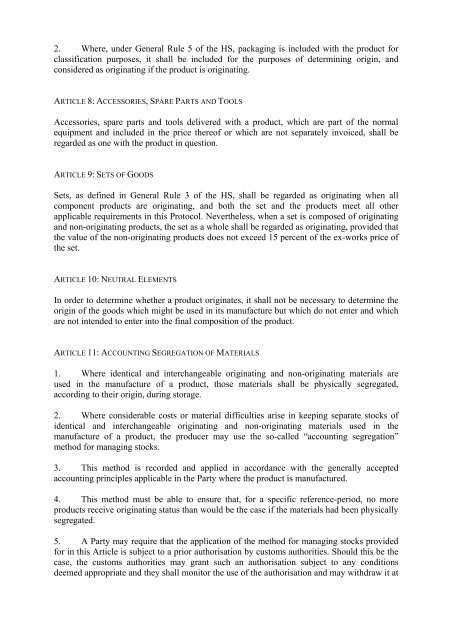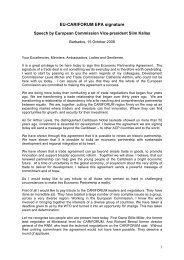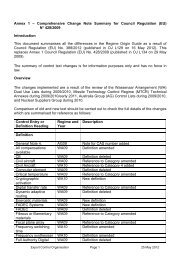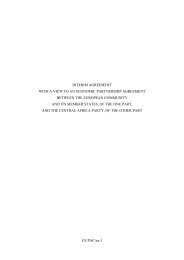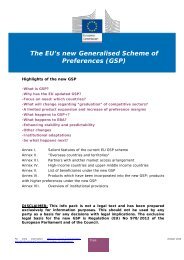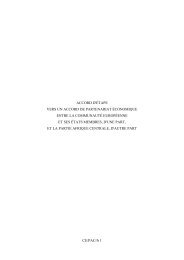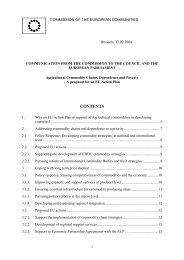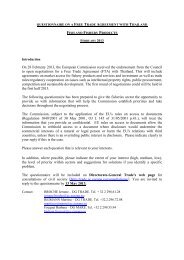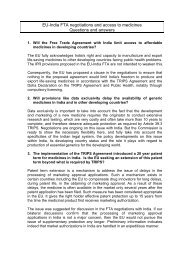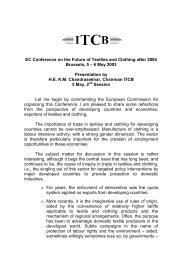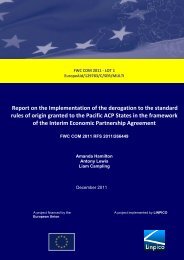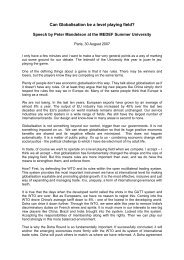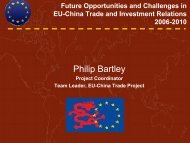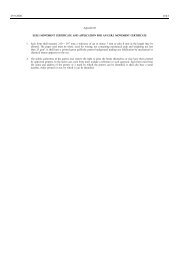Rules of origin
Rules of origin
Rules of origin
- No tags were found...
You also want an ePaper? Increase the reach of your titles
YUMPU automatically turns print PDFs into web optimized ePapers that Google loves.
2. Where, under General Rule 5 <strong>of</strong> the HS, packaging is included with the product forclassification purposes, it shall be included for the purposes <strong>of</strong> determining <strong>origin</strong>, andconsidered as <strong>origin</strong>ating if the product is <strong>origin</strong>ating.ARTICLE 8: ACCESSORIES, SPARE PARTS AND TOOLSAccessories, spare parts and tools delivered with a product, which are part <strong>of</strong> the normalequipment and included in the price there<strong>of</strong> or which are not separately invoiced, shall beregarded as one with the product in question.ARTICLE 9: SETS OF GOODSSets, as defined in General Rule 3 <strong>of</strong> the HS, shall be regarded as <strong>origin</strong>ating when allcomponent products are <strong>origin</strong>ating, and both the set and the products meet all otherapplicable requirements in this Protocol. Nevertheless, when a set is composed <strong>of</strong> <strong>origin</strong>atingand non-<strong>origin</strong>ating products, the set as a whole shall be regarded as <strong>origin</strong>ating, provided thatthe value <strong>of</strong> the non-<strong>origin</strong>ating products does not exceed 15 percent <strong>of</strong> the ex-works price <strong>of</strong>the set.ARTICLE 10: NEUTRAL ELEMENTSIn order to determine whether a product <strong>origin</strong>ates, it shall not be necessary to determine the<strong>origin</strong> <strong>of</strong> the goods which might be used in its manufacture but which do not enter and whichare not intended to enter into the final composition <strong>of</strong> the product.ARTICLE 11: ACCOUNTING SEGREGATION OF MATERIALS1. Where identical and interchangeable <strong>origin</strong>ating and non-<strong>origin</strong>ating materials areused in the manufacture <strong>of</strong> a product, those materials shall be physically segregated,according to their <strong>origin</strong>, during storage.2. Where considerable costs or material difficulties arise in keeping separate stocks <strong>of</strong>identical and interchangeable <strong>origin</strong>ating and non-<strong>origin</strong>ating materials used in themanufacture <strong>of</strong> a product, the producer may use the so-called “accounting segregation”method for managing stocks.3. This method is recorded and applied in accordance with the generally acceptedaccounting principles applicable in the Party where the product is manufactured.4. This method must be able to ensure that, for a specific reference-period, no moreproducts receive <strong>origin</strong>ating status than would be the case if the materials had been physicallysegregated.5. A Party may require that the application <strong>of</strong> the method for managing stocks providedfor in this Article is subject to a prior authorisation by customs authorities. Should this be thecase, the customs authorities may grant such an authorisation subject to any conditionsdeemed appropriate and they shall monitor the use <strong>of</strong> the authorisation and may withdraw it at


